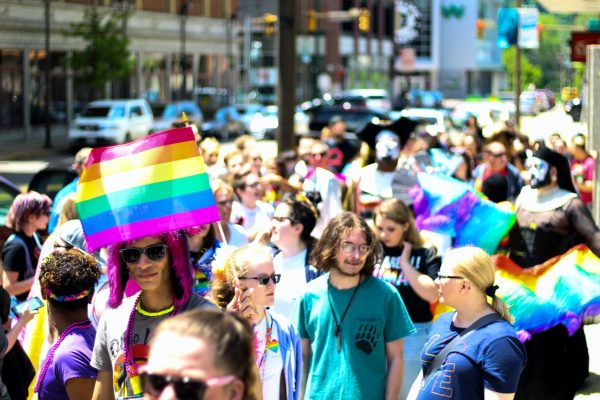In thinking of my next blog post, I wasn’t sure whether to include the polyamorous community simply because I recognize that heterosexual individuals also have polyamorous relationships. However, it’s important to realize that polyamorous individuals are part of the queer community because they defy the expectations of heteronormativity. Let me explain.
A polyamorous person is someone romantically, physically, and/or sexually attracted to multiple individuals, and finds that pursuing multiple relationships is most satisfying.
This defies our heteronormative society, who’s beliefs often include the “right” way to have a relationship is not an only heterosexual one, but also a monogamous one. (Rubin) Since it defies our heteronormative society, polyamorous identities are often considered to be queer.
History
According to the book Polyamory in the 21st Century: Love and Intimacy with Multiple Partners:
“Polyamory is an invented word for a different kind of relationship. Poly comes from Greek and means ‘many.’ Amory comes from Latin and means ‘love.’ Mixing Greek and Latin roots in one word is against traditional rules”… The word polyamory was created in the late 1980s by Morning Glory and Oberon Zell. They had been married since 1974, and while their bond continued, their open relationship had morphed into a live-in triad lasting ten years. Then it extended to 6-person group marriage, also lasting ten years. (p. 1).
Misconceptions/Stereotypes
Especially because of our heteronormative society, there are a lot of misconceptions and misunderstandings about polyamory. Here are some of them, along with the stereotypes of those involved in polyamorous relationships:
- They are not sexually satisfying or and are sexually risky (Hutzler)
- Polyamory is swinging, cheating, or kinky sex
- Polyamory is just friends with benefits
- You lose the emotional connection when you are in a polyamorous relationship
- Polyamory is harmful to children (Hutzler)
- Polyamorous relationships can’t be successful long term (Hutzler)
- Individuals in polyamorous relationships can’t be trusted (Hutzler)
- Individuals in polyamorous relationships just haven’t found the right person
- Individuals in polyamorous relationships are sex addicts (Anapol)
- Individuals can’t be in love with more than one person (Hutzler)
Other Facts
- There are many different ways to have a polyamorous relationships
- Research shows that people in consensual nonmonogamous relationships are more emotionally intimate, just as happy, are more likely to get tested for HIV, practice safe sex, and discuss sexual safety (quoted in Hutzler)
- There is debate on whether polyamory should be considered a sexual orientation (Klesse)
- Polyamorous relationships take place in heterosexual relationships too. It’s not only within the LGBTQIA+ Community (Anapol)
- There is often a coming out process that comes with a polyamorous identity (Anapol)
- “Some poly-identified people see polyamory as a choice of practice, others claim it as a natural state of being” (quoted in Klesse).
- In a study done this year, it was found that more men were interested in polyamory than women. It was explained that this might be because women tend to be more religious than men. (Hutzler)
The polyamorous community tends to be very misunderstood; especially we are socialized to believe that monogamy and eventually is the “right” way to have a relationship and love. In this way, it really challenges the way society views love and intimacy, as many queer identities do. I hope this clears things up for you or taught you something about this community.
Sources
Anapol, D. (2010). Polyamory in the 21st Century: Love and Intimacy With Multiple Partners.
Emanuella Grinberg, C. (2013, October 26). Polyamory: When three isn’t a crowd. CNN Wire.
Hutzler, K. T., Giuliano, T. A., Herselman, J. R., & Johnson, S. M. (2016). Three’s a crowd: public awareness and (mis)perceptions of polyamory. Psychology & Sexuality, 7(2), 69-87. doi:10.1080/19419899.2015.1004102
Klesse, C. (2014). Polyamory: Intimate practice, identity or sexual orientation?. Sexualities, 17(1/2), 81.
Rubin, G. S. (1998). CHAPTER 9: Thinking Sex: Notes for a Radical Theory of the Politics of Sexuality. In, Culture, Society & Sexuality (p. 143).
Originally posted on https://coloritqueer.com/






